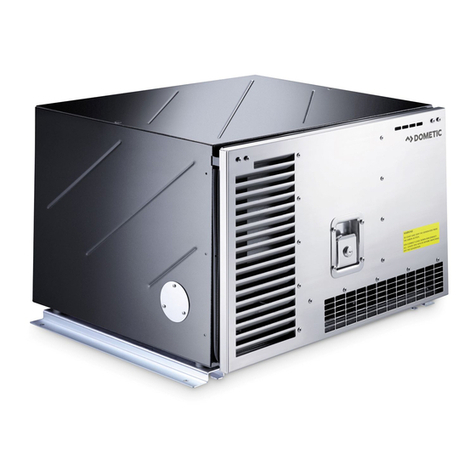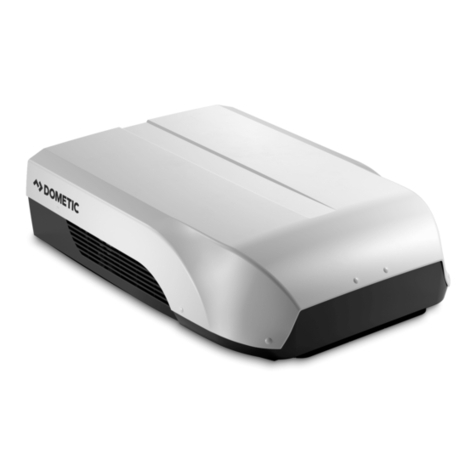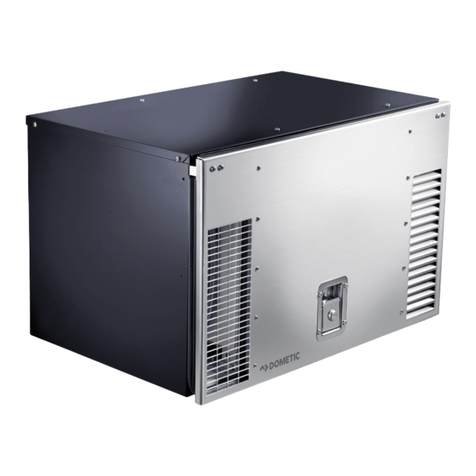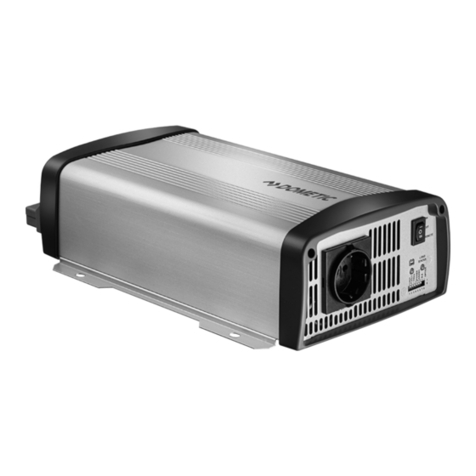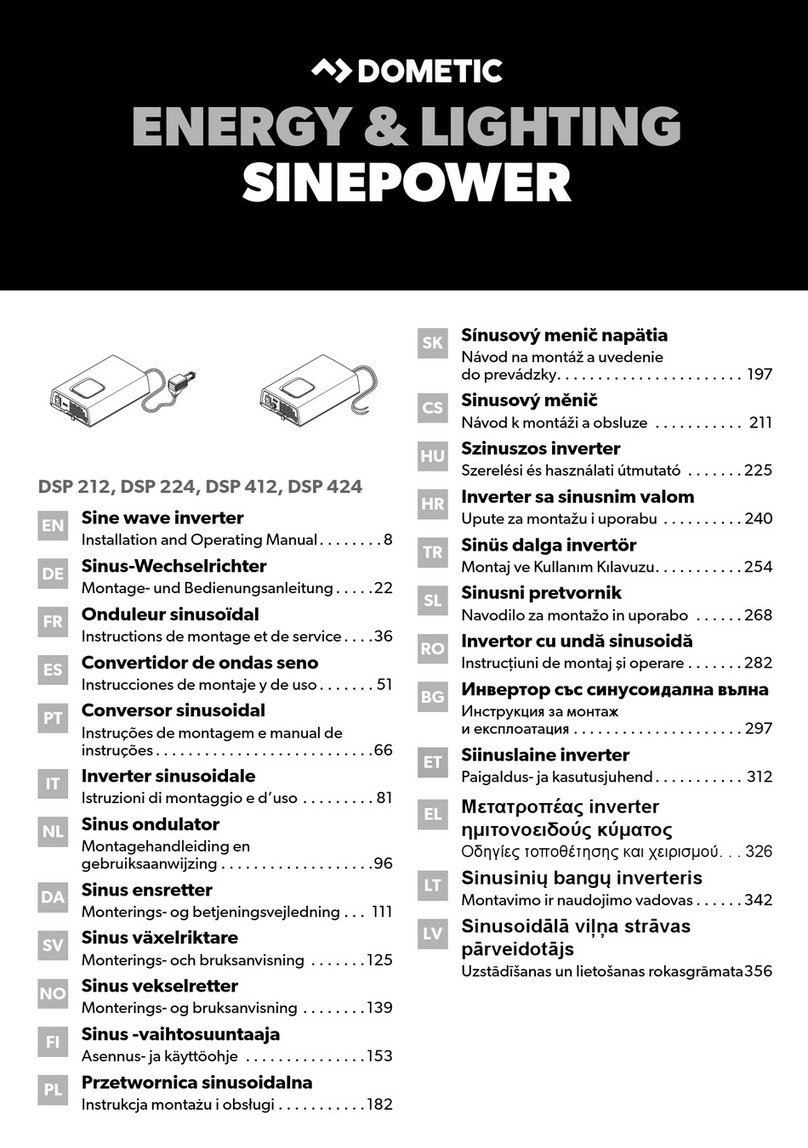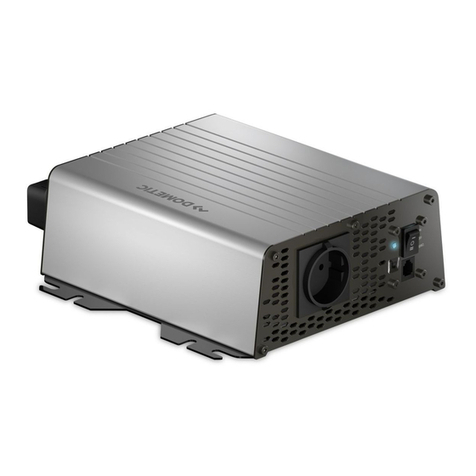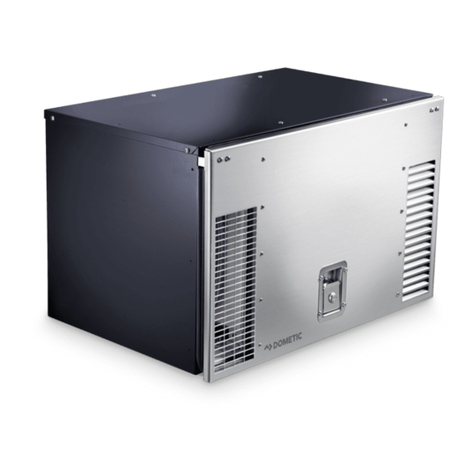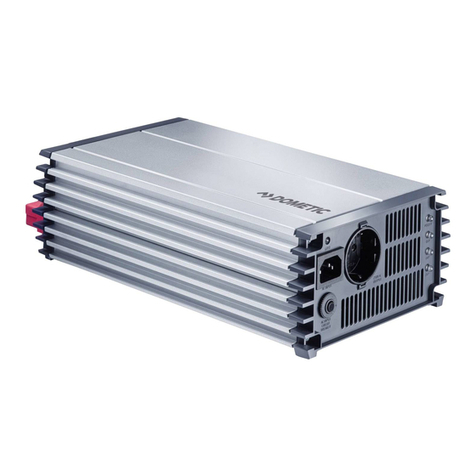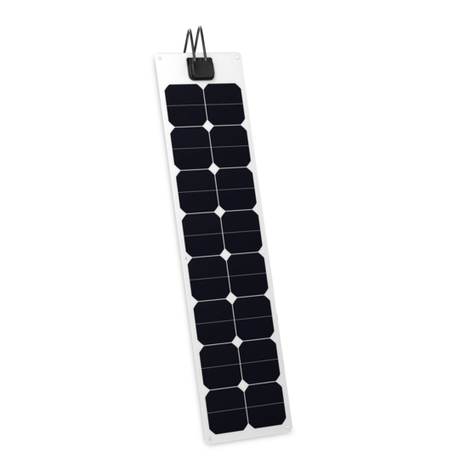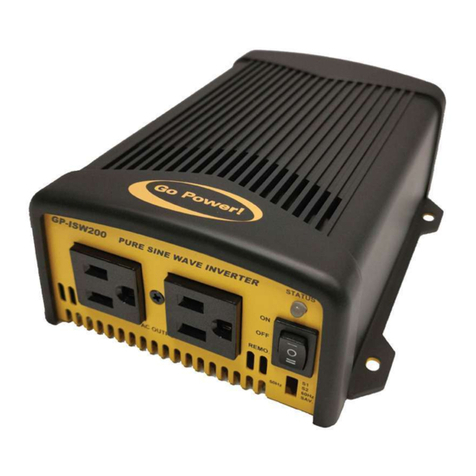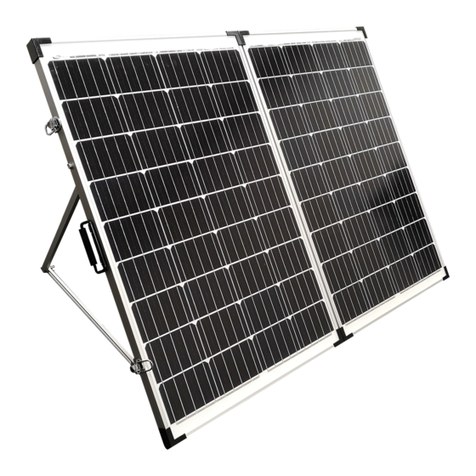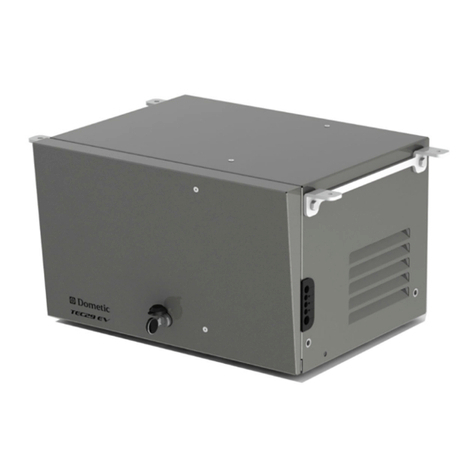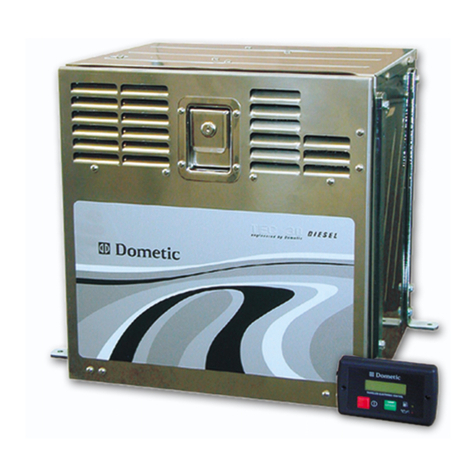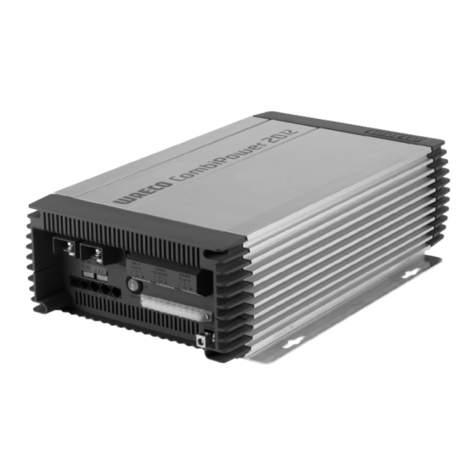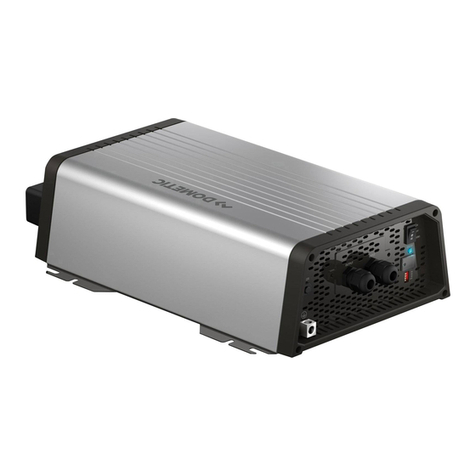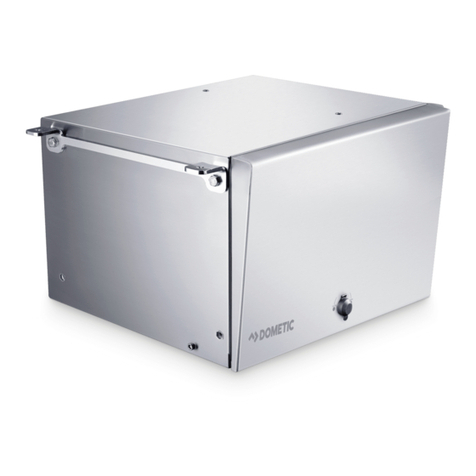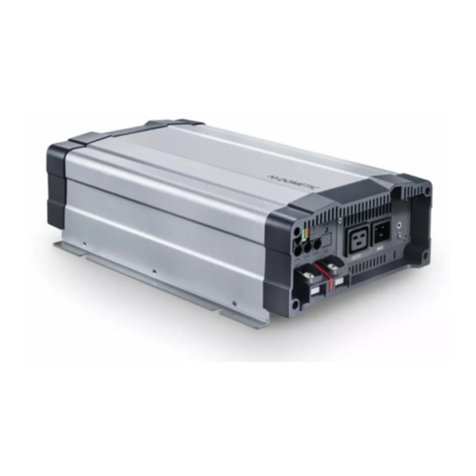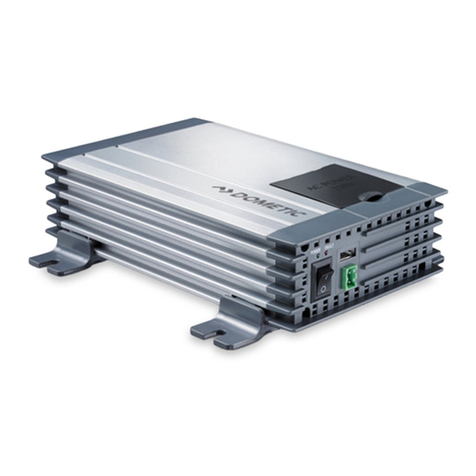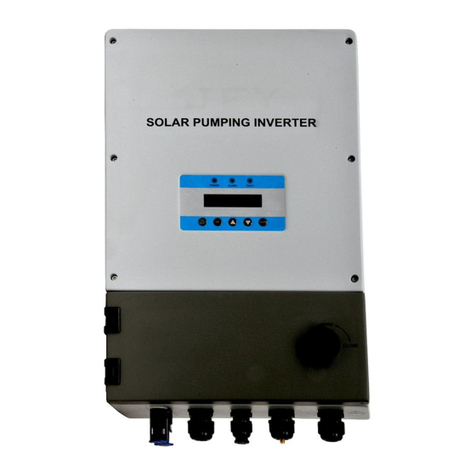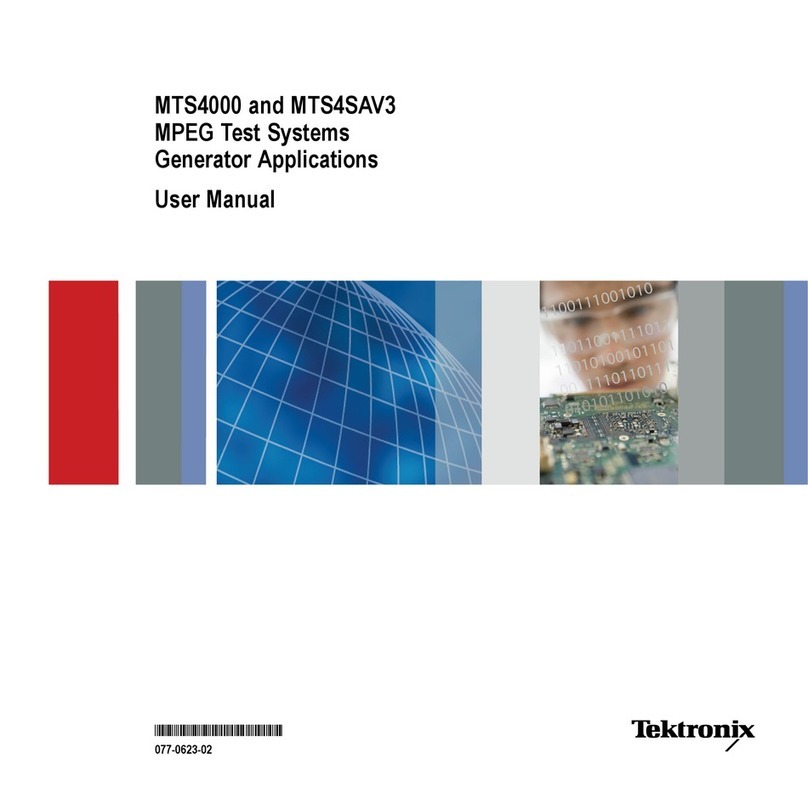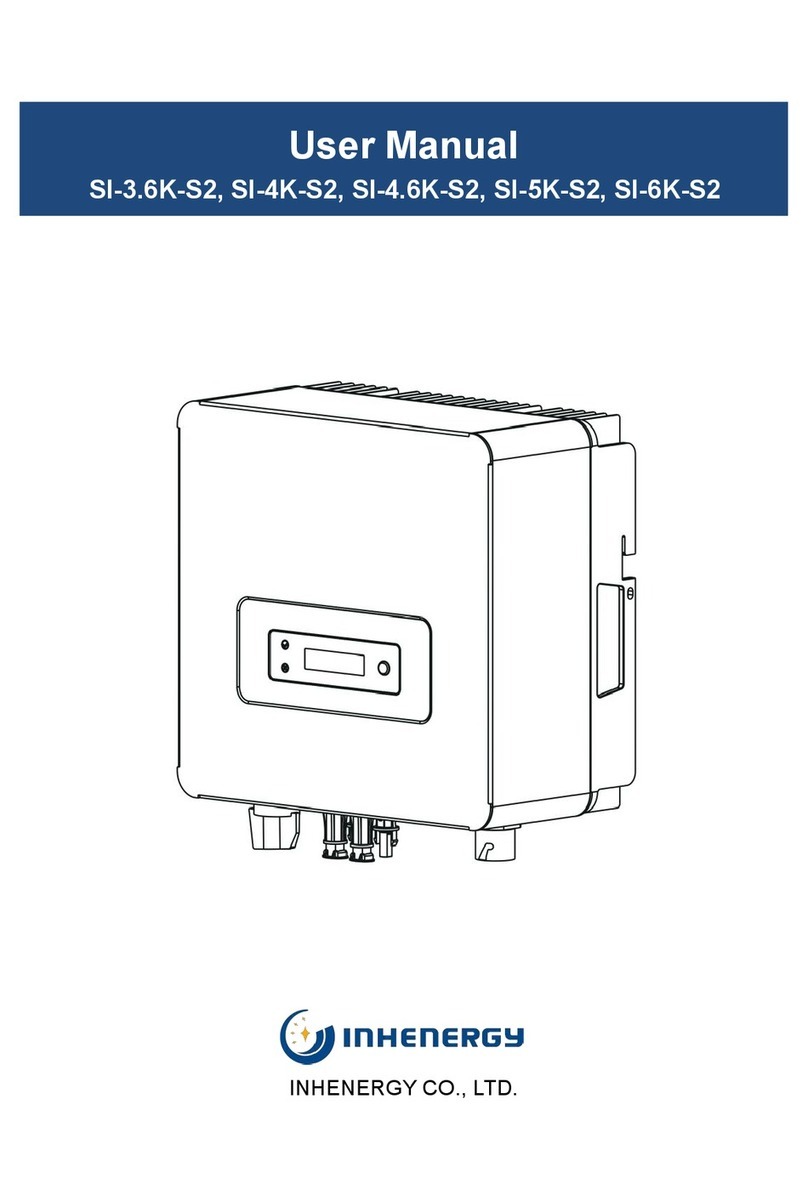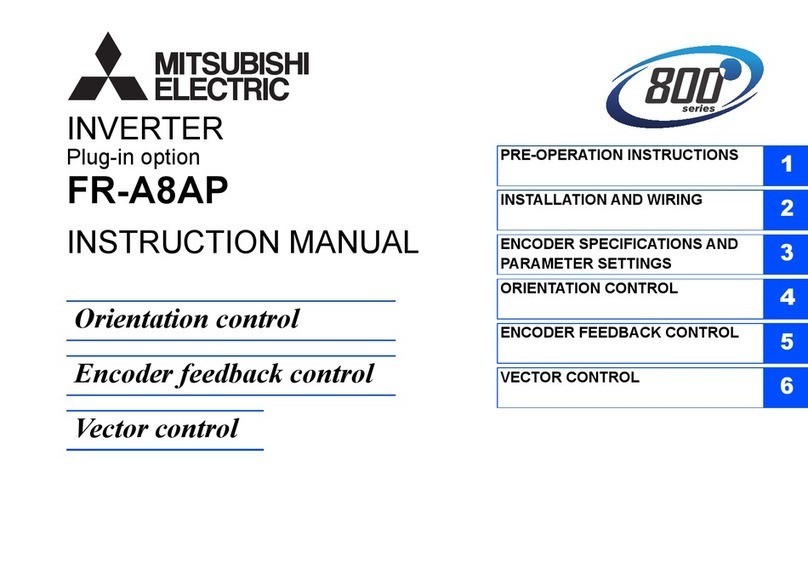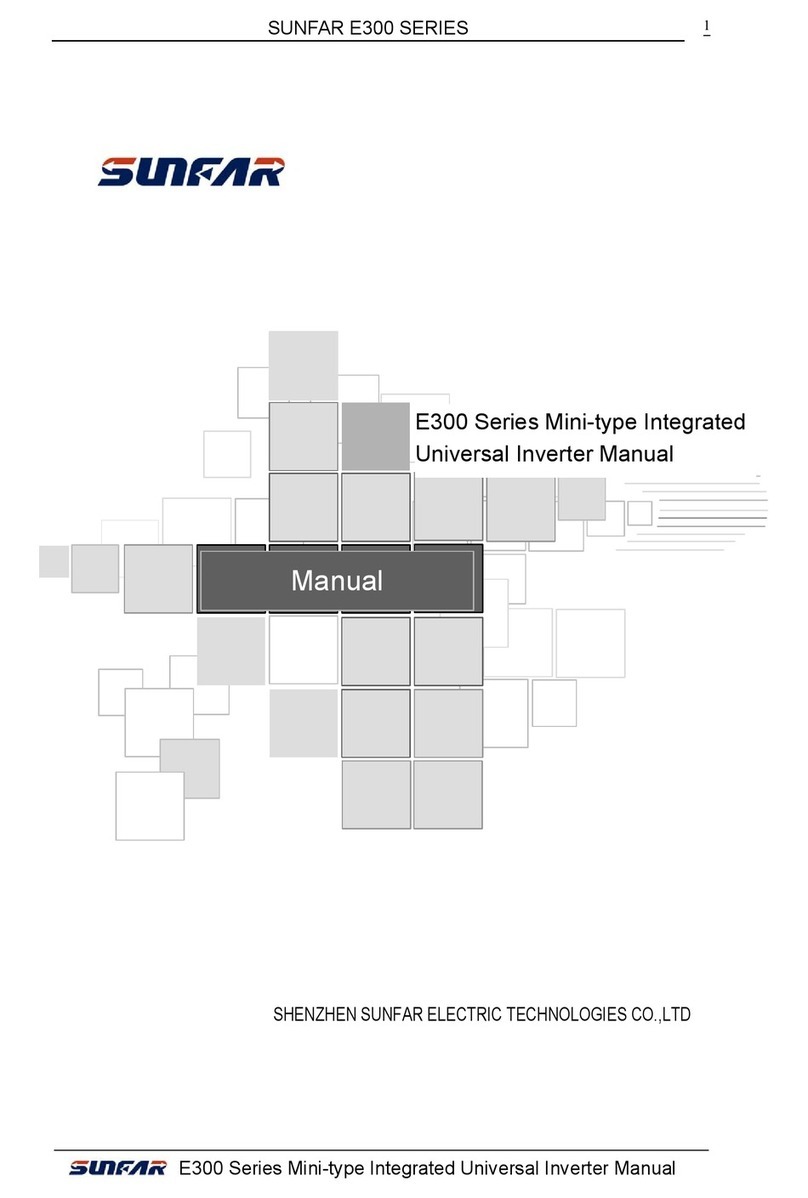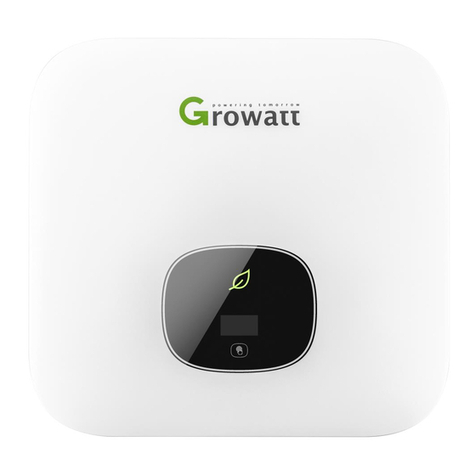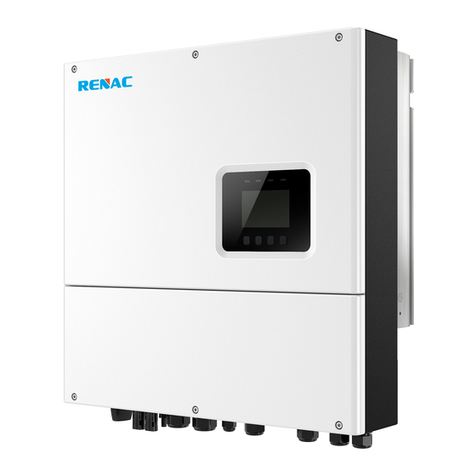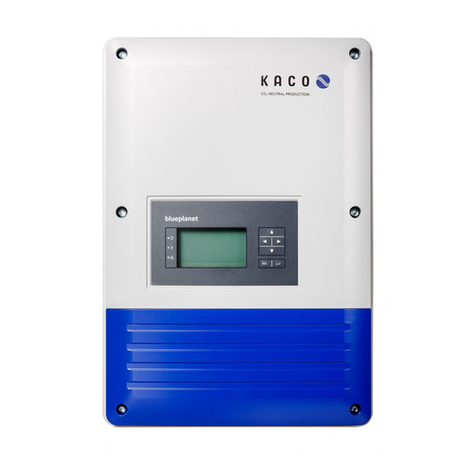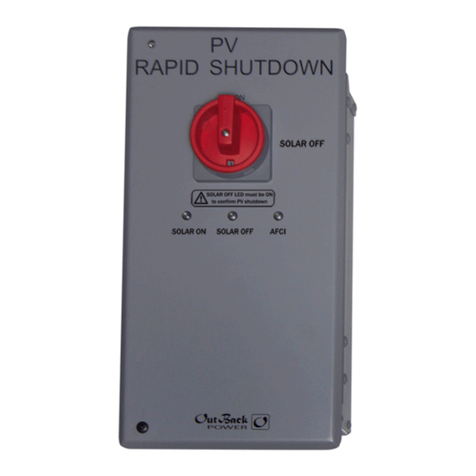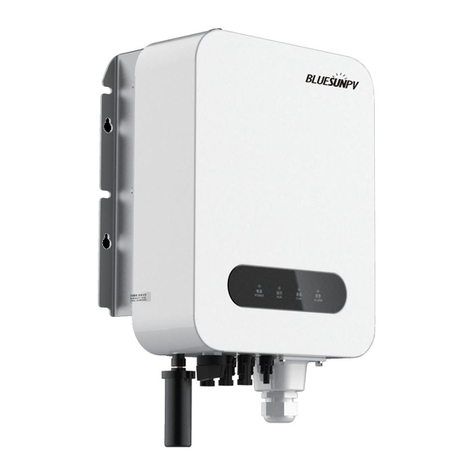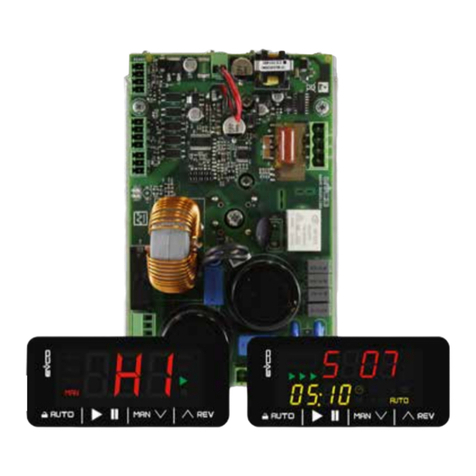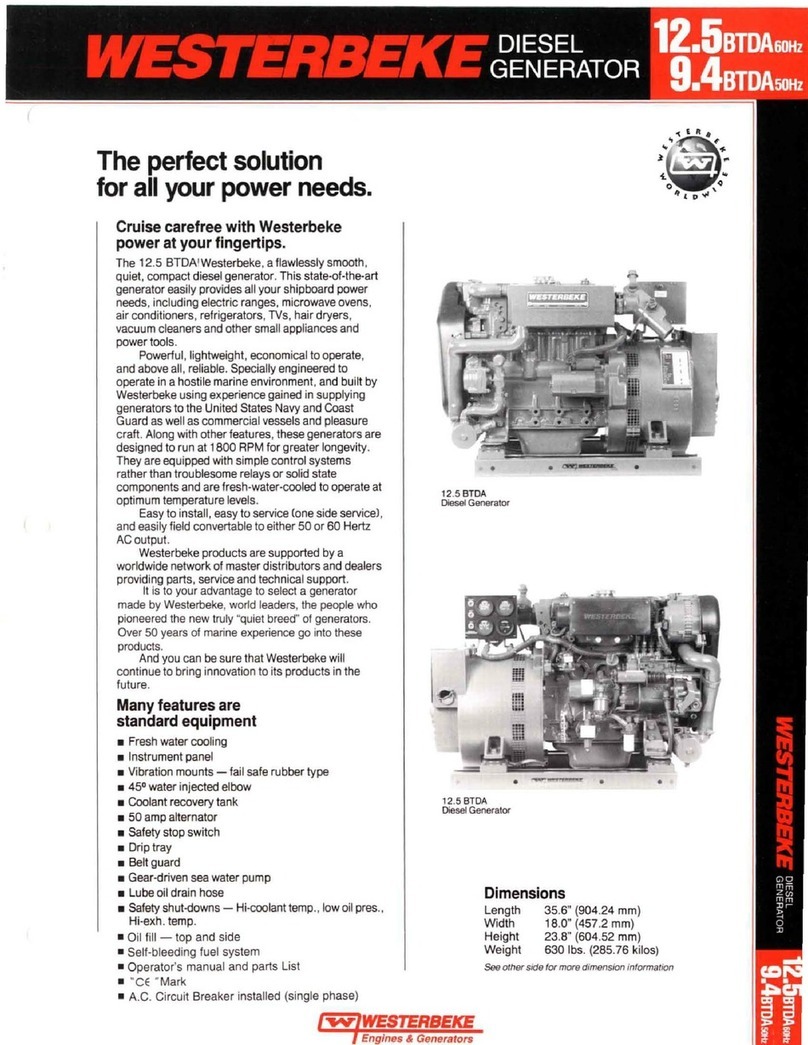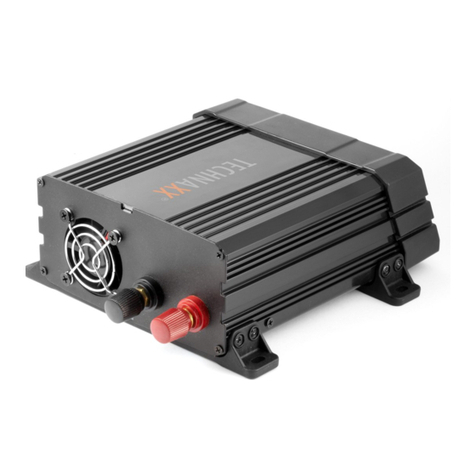
12 4445103622
Aslong as the mains voltage is applied, the inverter
cannot be switched on again. If noexternal voltage
is fed in, the device works as a pure inverter.
Direct supply of consumers at the
inverter
All devices offer a power outlet for direct connec-
tion of 230 V AC consumers (fig. 7, page 6).
Inverter supply to multiple sockets
!
The device can supply 230 V AC to multiple sock-
ets at once. In case of using multiple sockets, the
appropriate protective device must be installed
(fig. 8, page 6).
After connecting the inverter to the battery, the
device is ready for operation.
➤To turn the inverter on, shortly press the On/Off
button on the display panel (fig. 2, page 3, 2).
The Inverter LED (fig. 2, page 3, 3) indicates
operational readiness. After an internal self-test of
the entire system, two or three short and one long
beep is signaled. Then, the inverter is ready to use.
Automatic mode
The inverter starts up in automatic mode. This
mode is indicated by the Inverter (fig. 2,
page 3, 3) and Automatic (fig. 2, page 3, 4) LEDs
on the display panel. The automatic mode helps
to save battery energy for larger consumers. Large
consumers are often only switched on for a short
time or at intervals, while the inverter permanently
loads the battery.
When switched on, the inverter constantly checks
the connected load. As long as the connected
device is switched on, the inverter provides the
required power. When the connected device is
switched off, the inverter detects this state and
automatically switches to standby mode after a
very short observation time. This is indicated by
the flashing of the Automatic LED on the display
panel (fig. 2, page 3, 4). The inverter now
checks every second whether a load is connected
to the output. If it does not find a consumer in
standby mode within the preset interval, it
switches off completely and can only be restarted
with the On/Off button (fig. 2, page 3, 2).
The standby operation can be adapted to custom
requirements, by setting the standby load thresh-
old and the duration of the standby scan.
To adjust the standby criteria, perform the follow-
ing steps:
1. Remove the display panel by unfastening the
screws (fig. 2, page 3, 1).
2. Adjust the load threshold using the DIP switch
1 (fig. 3, page 4, 4).
3. Adjust the standby scan time using the DIP
switch 2 (fig. 3, page 4, 4).
Permanent operation (without standby
function)
To operate the inverter with very low power con-
sumers, such as battery chargers and radios, the
standby function must be deactivated. If the con-
nected device is switched off, the inverter contin-
ues to run and permanently loads the battery with
approximately 6 to 10 W.
All inverters can be started with the standby func-
tion disabled.
➤To turn the inverter on with standby function dis-
abled, press the On/Off button on the display
panel for 3 seconds (fig. 2, page 3, 2).
This operation mode is indicated by the constantly
lit Inverter LED (fig. 2, page 3, 4) on the display
panel. The Automatic LED (fig. 2, page 3, 4) turns
off.
To disable the standby function, perform the fol-
lowing steps:
1. Remove the display panel by unfastening the
screws (fig. 2, page 3, 1).
2. Set the DIP switch 3 (fig. 3, page 4, 4) to Off
position.
WARNING! Electrocution hazard
The installation may only be carried out
by a qualified electrician.




















